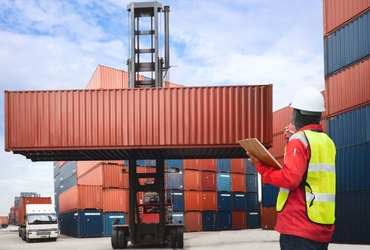
Ocean Alliance



April 2017 saw great changes, operations wise, in the ocean freight industry. In 2016, we saw a trend of mergers and acquisitions like never before. Following these, the world’s largest carriers will consolidate into three main groupings: THE Alliance, Ocean Alliance, and the 2M+H. In this post, we’ll delve into the figures behind the Ocean Alliance and its members.
Come next April, members of the Ocean Alliance will set sail together on a new route network and port rotation. Amid a prolonged industry downturn, we’re seeing cooperations among shipping lines as the industry clamors to stay afloat. Some notable M&As this year include Maersk’s acquisition of Hamburg Süd and Japan’s big three shipping lines collaborating. Amid a prolonged industry downturn, this perhaps the best way forward. More specifically, they’re fighting to avoid going belly up like Hanjin.
The numbers behind the Ocean Alliance
The Ocean Alliance’s services and routes include over 40 weekly services, which includes some 498 port calls. It’s set to be the largest consortium in container shipping history, given its 350-strong container vessel fleet and a total carrying capacity of 3.5 million TEUs.
“The top priority of the OCEAN Alliance is service quality and schedule reliability. Customers will benefit from a competitive selection of sailing schedules and direct port pairs, fast transit times, and a highly efficient fleet of vessels to cater to the needs of today’s demanding and increasingly green global supply chains.”
- Ocean Alliance statement
Here’s an infographic showing the breakdown of the numbers and routes offered by the network.
![]()
_*Update: In July 2017, Cosco Shipping announced its acquisition of OOCL_
With this, Ocean Alliance will set itself as the largest consortium in container shipping history.Altogether, it makes up 25.6% of the global market share (Alphaliner Dec 2016 data), in comparison to THE Alliance’s 16.5%.
Within the group, CMA CGM will have the largest share among the partners. It will deploy 119 vessels, which accounts for some 35% of the group’s capacity.
“Ocean Alliance is the largest operational agreement ever made between shipping companies. With more than 40 maritime services, we will be sharing our fleet with the largest Asian shipping companies.”
- Rodolphe Saadé, CMA CGM Group Vice-Chairman
If all goes according to plan, the joint service will commence on April 1st, 2017 and this will go on for an initial period of five years. Evidenced by the name of its network, “Day One Product”, this service forms only an initial outlook for the group. But already, the quartet has expressed its interest in expanding in the future.
*Update: In Dec 2017, the Ocean Alliance announced its expanded “Day Two Product” service that will begin in April 2018
Not everything is fine and dandy
Obviously, the advantages generated by the Ocean Alliance include the number of services and capacity made available. However, as with all cooperations, cons exist,but alliances usually neglect to mention downsides. Sometimes, for the carriers, working with each other is not always something that works very smoothly.
“For the customer, the downside usually comes in terms of less flexibility or advanced document cut-offs. This is usually dictated to the other members of the alliance by whoever is the actual vessel operator. An example is if a shipment is booked with OOCL but sailing on CMA’s vessel. OOCL will have to cater their cut-off and terms to accommodate CMA’s requirements.
This can mean difficulties in getting approval for things like late gates or hazardous cargo. This happens when you are looking to move your cargo with someone other than the actual vessel operator. If two of the carrier have issues in their internal collaboration, that tension turns into things not getting approved on time by vessel operator. And that causes problems for the other carrier.”
- Klaus Lysdal, VP Sales & Operations, iContainers
![]()
Related Articles


